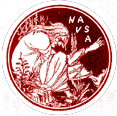Members' Book Announcements
Rachel Ablow, ed., The Feeling of Reading: Affective Experience and Victorian Literature (University of Michigan Press, 2010) Contributors: Rachel Ablow, Steven Arata, Nicholas Dames, Kate Flint, John Plotz, Leah Price, Catherine Robson, Garrett Stewart, Herbert F. Tucker. "The Feeling of Reading" addresses how we think about reading today through a focus on Victorian reading practices and understandings of reading. Examining Victorians' interest in reading as a site of bodily response and affective experimentation, the contributors to this collection argue that Victorians did not just interpret but also "felt" the texts they consumed. |
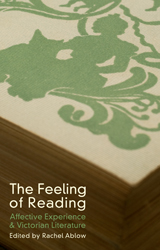 Buy on Amazon |
Tanya Agathocleous, Urban Realism and the Cosmopolitan Imagination (Cambridge University Press, 2011) Urban Realism and the Cosmopolitan Imagination argues that Victorian urban representation helped to shape a global imaginary. Shifting in perspective between city and world, writers produced detailed local knowledge and an ideal of totality simultaneously. Together, these different scales produced a sense of human community that gave shape and meaning to the inconceivable complexity of the modern world and the alienating forces of imperialism, capitalism and technology that connected city to world. Urban realism–with its attention to particular locales, classes and ethnicities–anchored and differentiated cosmopolitan ideals in order to situate them in the material world of capitalist modernity, turning the recalcitrant inequities of urban existence into a symbol for what needed to be addressed globally. |
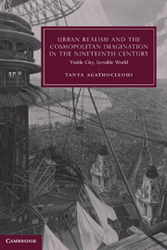 Buy on Amazon |
Jean Arnold, Victorian Jewelry, Identity, and the Novel (Ashgate, 2011) In this study of Victorian jewels and their representation, Jean Arnold explores the role material objects play in the cultural cohesion of the West. Diamonds and other gems, Arnold argues, symbolized the most closely held beliefs of the Victorians and thus can be considered "prisms of culture." Mined in the far reaches of the empire, they traversed geographical space and cultural boundaries, representing monetary value and evoking empire, class lineage, class membership, gender relations, and aesthetics. Arnold analyzes the many roles material objects fill in Western culture and surveys the cross-cultural history of the Victorian diamond, uncovering how this object became both preeminent and representative of Victorian values. Her close readings of Wilkie Collins's The Moonstone, George Eliot's Middlemarch, William Makepeace Thackeray's The Great Hoggarty Diamond, and Anthony Trollope's The Eustace Diamonds show gendered, aesthetic, economic, fetishistic, colonial, legal, and culturally symbolic interpretations of jewelry as they are enacted through narrative. Taken together, these divergent interpretations offer a holistic view of a material culture's affective attachment to objects. As the assigned meanings of jewels turn them into symbols of power, personal relationships, and valued ideas, human interactions with gems elicit emotional responses that bind the materialist culture together. |
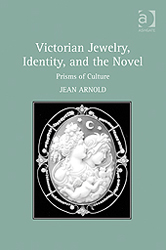 Buy on Amazon |
Sukanya Banerjee, Becoming Imperial Citizens: Indians in the Late-Victorian Empire (Duke University Press, 2010) Becoming Imperial Citizens examines the narrative registers through which Indians formulated liberal notions of citizenship in the British Empire from the late nineteenth century through the early twentieth. Tracing the affective, thematic, and imaginative tropes that underwrote Indian claims to formal equality before decolonization, Banerjee emphasizes the extralegal life of citizenship: the modes of self-representation it generates even before it is codified and the political claims it triggers because it is deferred. Interpreting autobiography, fiction, election speeches, economic analyses, parliamentary documents, and government correspondence, the book theorizes modes of citizenship decoupled from the rights-conferring nation-state; in so doing, it provides a new frame for understanding the colonial subject, who is usually excluded from critical discussions of citizenship. |
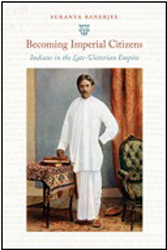 Buy on Amazon |
Susan David Bernstein and Elsie B. Michie., eds. Victorian Vulgarity: Taste in Verbal and Visual Culture (Ashgate 2009) Contributors (in order of contents): Beth Newman, James Buzard, Ellen Bayuk Rosenman, Rosemary Jann, Meri-Jane Rochelson, Carolyn Dever, Deborah Denenholz Morse, Joseph Litvak, Ronald Thomas, Nancy Rose Marshall, Julie F. Codell, John Kucich. Originally describing language use and class position, vulgarity became, over the course of the nineteenth century, a word with wider social implications. This collection examines the diverse ramifications of vulgarity in the four areas where it was most discussed in the nineteenth century: language use, changing social spaces, the emerging middle classes, and visual art. Exploring the dynamics of the term as revealed in dictionaries and grammars; Mayhew's London Labour and the London Poor; fiction by Dickens, Eliot, Gissing, and Trollope; essays, journalism, art, and art reviews, the contributors bring their formidable analytical skills to bear on this enticing and divisive concept. Taken together, these essays urge readers to consider the implications of vulgarity's troubled history for today's writers, critics, and artists. |
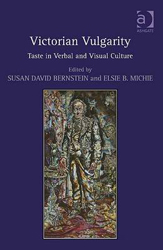 Buy on Amazon |
Mary Wilson Carpenter, Health, Medicine, and Society in Victorian England (ABC-CLIO, Praeger Imprint, 2009) Part of the Victorian Life and Times series edited by Sally Mitchell, this book is a social and cultural history of Victorian medicine. Opening with a chapter on practitioners and patients from 1815 through the last decades of the century, a period when practitioners were exclusively male and medical care only gradually and unevenly professionalized, the book closes with a chapter on women's struggle to enter the profession as practitioners, beginning in the 1870s, and on the increasing medicalization of women throughout the century as a special class of patients. Chapters 2-5 consider four major diseases and their impact on literature and culture as well as on medical history: cholera, tuberculosis, syphilis and smallpox. Chapters 6 and 7 discuss two disabilities, deafness–especially deaf-mutism–and blindness, and their Victorian history of treatment and education. This book provides general readers and scholars alike with an interdisciplinary yet focused view of Victorian medical history not available elsewhere. |
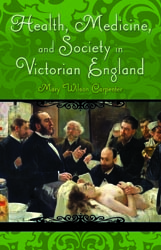 Buy on Amazon |
Ayse Çelikkol, Romances of Free Trade (Oxford University Press, 2011) Exploring works by Walter Scott, Harriet Martineau, Charlotte Bronte, Charles Dickens, and their lesser-known contemporaries, Romances of Free Trade historicizes globalization as it traces the perception of dissolving borders and declining national sovereignty back into the nineteenth century. The book offers a new account of the cultural work of romance in nineteenth-century Britain. Çelikkol argues that novelists and playwrights employed this genre to represent a radically new historical formation: the emergence of a globalized free-market economy. From the figure of the smuggler to the episodic plot structure, romance elements in fiction and drama narrated and made tangible the sprawling global markets and fluid capital that were reshaping the world. |
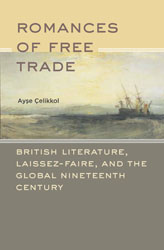 Buy on Amazon |
Preeti Chopra, A Joint Enterprise: Indian Elites and the Making of British Bombay (University of Minnesota Press, 2011) A Joint Enterprise reveals the unexpected role of native communities in the physical transformation of the urban fabric of British Bombay from 1854-1918. Preeti Chopra shows here how British Bombay was, surprisingly, very much a collaboration–a product of the colonial government and the Indian and European mercantile and industrial elite shaping the city to serve their combined interests. Chopra shows how the European and Indian engineers, architects, and artists worked with each other to design a city–its infrastructure, architecture, public sculpture–that was literally constructed by Indian laborers and craftsmen. Beyond the built environment, Indian philanthropists entered into partnerships with the colonial regime to found and finance institutions–educational, financial, and medical–for the general public. |
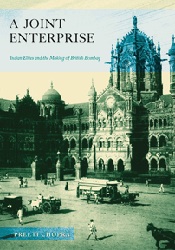 Buy on Amazon |
Eleanor Courtemanche, The 'Invisible Hand' and British Fiction, 1818-1860: Adam Smith, Political Economy, and the Genre of Realism (Palgrave, 2011) Some economic ideas are too interesting to be left to economists. This book argues that Adam Smith's metaphor of the 'invisible hand' – in which selfish actions are mysteriously transformed into aggregate benefits – implies an entire spatial and temporal system in which the morality of any particular action can only be understood in the context of society as a whole. While political economists focused only on the optimistic outcomes of capitalist moral activity, Smith's model of ironic morality also influenced the work of novelists including Austen, Dickens, Martineau, Thackeray, Gaskell, and Eliot. Their realist novels represent the reconciliation between individual ignorance and systemic overview as much less stable than the economic synthesis, using omniscient narrative voices, multiple perspectives, and humor to depict a wide variety of possible outcomes. |
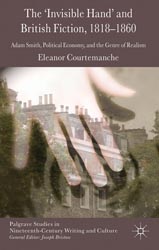 Buy on Amazon |
Sandra Donaldson, Rita Patteson, Marjorie Stone and Beverly Taylor, eds. The Works of Elizabeth Barrett Browning (Pickering & Chatto, 2010, 5 vols). Termed "a magnificent and invaluable tool for students of nineteenth-century English poetry" by Anthony H. Harrison , The Works of Elizabeth Barrett Browning is the first comprehensive modern scholarly edition of poetical works and essays by the most internationally influential English woman poet of the nineteenth century. The edition includes previously unpublished manuscripts as well as periodical publications never before reprinted. Copytexts represent poems in their final version as overseen by the poet, and the record of variants shows for the first time the substantial textual revisions made in many poems after their initial publication. New transcriptions are drawn from manuscript sources in private and public archives in the UK and the US. Comprehensive headnotes for individual works draw on recently published correspondence to summarize their compositional history, contexts and reception, revealing EBB's interactions with a wide range of Romantic and Victorian writers as well as her participation in debates on abolition, factory reform, women's rights, Italian unification, religion, aesthetics and poetics. These networks included American and European writers such as Margaret Fuller, George Sand and Edgar Allan Poe. Annotations of the poet's references, allusions and echoes demonstrate as well her lifelong love of reading and its range across the work of many other authors, including Robert Browning. The Works of Elizabeth Barrett Browning is an important new resource for literary, political and cultural history, women's writing and studies of transatlanticism and international networks in the nineteenth century. A supplementary website is located at University of North Dakota"s Special Collections' Digital Collections, and Dalhousie University's is under construction (www.ebbarchive.org). |
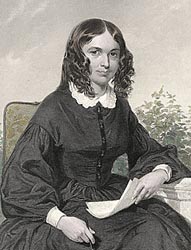 Buy on Amazon |
Pamela K Gilbert, ed., A Companion to Sensation Fiction (Wiley-Blackwell, 2011) The Victorian era saw a huge proliferation of fiction, with novels finding the largest audience they had ever enjoyed. This comprehensive collection offers a complete introduction to sensation fiction, one of the most popular, and criticized, forms of the period. Contributions from some of the best scholars from around the world place key authors and novels in their cultural and historical context, and bring to bear a range of perspectives to explore important related issues, including law, publishing history, poetry, theatre, visual art, race, and gender. Examining both the pre and post-history of the genre, to situate it in the larger tradition of Victorian publishing and literature, this companion is the definitive guide to a hugely influential literary movement and the major topics in its production and reception. |
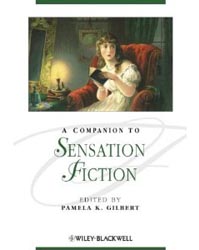 Buy on Amazon |
Melissa Valiska Gregory and Melisa Klimaszewski, eds. The Lazy Tour of Two Idle Apprentices, by Wilkie Collins and Charles Dickens. 1857. (Hesperus Press, 2011) In autumn 1857, Charles Dickens embarked a sightseeing trip to Cumberland with the rising star of literature Wilkie Collins. Portraying themselves as two bumbling bachelor types on holiday, the two men wrote an account of the trip's comic misadventures for Dickens's periodical Household Words. Representing Victorian journalism at its best, The Lazy Tour is a blend of loopy slapstick and gothic terror that crackles with a unique textual energy. It also offers rare insight into one of literature's most famed and intriguing friendships, as the men gleefully caricature themselves as Thomas Idle (Collins, a "born-and-bred idler") and Francis Goodchild (Dickens, "laboriously idle"). The result is an exuberant diary that enriches our understanding of Collins's and Dickens's friendship and which showcases the opportunities for literary invention and experimentation in Victorian periodical writing. This edition was recently featured on the flagship BBC books program "Open Book". |
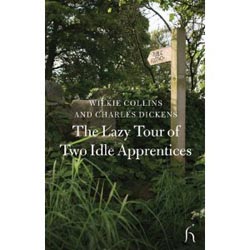 Buy on Amazon |
Elaine Hadley, Living Liberalism (University of Chicago Press, 2010) In the mid-Victorian era, liberalism was a practical politics: it had a party, it informed legislation, and it had adherents who identified with and expressed it as opinion. It was also the first British political movement to depend more on people than property, and on opinion rather than interest. But how would these subjects of liberal politics actually live liberalism? Hadley focuses on the key concept of individuation–how it is embodied in politics and daily life and how it is expressed through opinion, discussion and sincerity. Living Liberalism argues that the properties of liberalism–citizenship, the vote, the candidate, and reform, among others–were developed in response to a chaotic and antagonistic world. Hadley reveals an entirely new and unexpected prehistory of our modern liberal politics. |
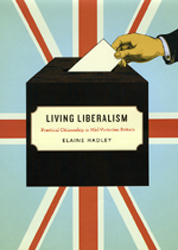 Buy on Amazon |
Linda K. Hughes, The Cambridge Introduction to Victorian Poetry (Cambridge University Press, 2010) Rather than surveying select major authors, The Cambridge Introduction to Victorian Poetry emphasizes the reciprocal influence of poetry and the mass medium of Victorian print. Widely-circulating periodicals brought poems to thousands and generated dialogues between competing poetic voices while also integrating poetry into public debates on science, religion, domesticity, empire, reform, and aestheticism. Part I, "The Forms of Victorian Poetry," focuses on experimentalism, poetic tradition, and the print medium. Part II, "The Rhetoric of Victorian Poetry," redefines the "rhetoric" of Victorian poetry in relation to mass media and poetry's ability to unsettle assumptions and generate new perspectives through literary form. |
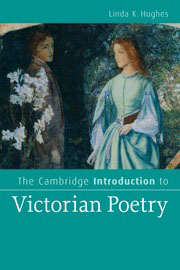 Buy on Amazon |
John Jordan, Supposing "Bleak House" (University of Virginia Press, 2011) Supposing "Bleak House" is an extended meditation on what many consider to be Dickens's and nineteenth-century England's greatest work of narrative fiction. Focusing on the novel's retrospective narrator, whom he identifies as Esther Woodcourt in order to distinguish her from her younger, unmarried self, John Jordan offers provocative new readings of the novel's narrative structure, its illustrations, its multiple and indeterminate endings, the role of its famous detective, Inspector Bucket, its many ghosts, and its relation to key events in Dickens's life during the years 1850 to 1853. Drawing on insights from narratology and psychoanalysis, as well as from Derrida's Specters of Marx, Jordan claims Dickens as a powerful investigator of the unconscious mind and as a "popular" novelist deeply committed to social justice and a politics of inclusiveness. |
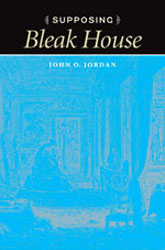 Buy on Amazon |
Sandro Jung, ed., Elizabeth Gaskell, Victorian Culture and the Art of Fiction: Essays for the Bicentenary (Academia Scientific, 2010) Elizabeth Gaskell, Victorian Culture, and the Art of Fiction: Essays for the Bicentenary, assembles 14 original essays on Gaskell and her work by some of the leading Gaskell scholars such as Joanne Shattock and Alan Shelston, and also introduces the work of younger scholars exploring the varied discourses, ideologies, and contexts that characterise Gaskell's writing. Focusing on examinations of texts ranging from Gaskell's journalism, letters, short stories, and novels, the collection aims to provide useful modern approaches to the author's oeuvre. Contributions investigate questions of class and gender (such as the role of the Victorian woman and Victorian masculinity), Darwinian evolution theory, medicine, friendship, and the literary tradition (including Wordsworth's presence in Gaskell's early writing). Above all, the collection offers a fresh consideration of this important Victorian novelist, while also raising questions about future directions for Gaskell scholars, and makes a central contribution to the contemporary understanding of a writer who is no longer merely seen as the author – albeit an important one – of social problem fiction, but whose ideational and ideological range reveals her as an accomplished master of form and generic conventions. |
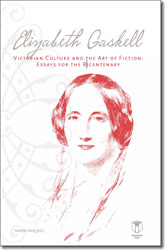 Buy on Amazon |
Tamara Ketabgian, The Lives of Machines: The Industrial Imaginary in Victorian Literature and Culture (University of Michigan Press, 2011) Today we commonly describe ourselves as machines that "let off steam" or feel ''under pressure." The Lives of Machines investigates how Victorian technoculture came to shape this language of human emotion so pervasively and irrevocably and argues that nothing is more intensely human and affecting than the nonhuman. Treating British literature from the 1830s to the 1870s, this study examines forms of feeling and community that combine the vital and the mechanical, the human and the nonhuman, in surprisingly hybrid and productive alliances. Challenging accounts of industrial alienation that still persist, the author defines mechanical character and feeling not as erasures or negations of self, but as robust and nuanced entities in their own right. The Lives of Machines thus offers an alternate cultural history that traces sympathies between humans, animals, and machines in novels and nonfiction about factory work as well as in other unexpected literary sites and genres, whether domestic, scientific, musical, or philosophical. |
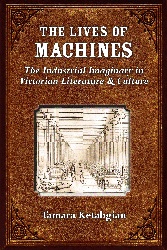 Buy on Amazon |
Lorraine Janzen Kooistra, Poetry, Pictures, and Popular Publishing (Ohio University Press, 2011) This study demonstrates the cultural centrality of a neglected cultural artefact: the poetic gift book with wood-engraved illustrations that dominated the Christmas market in the 1860s. Known in its own day as a "drawing-room book," this hybrid multi-media form mediated "high" and popular art as well as book and periodical publication in an age of mechanical reproduction. Examining the gift book's aesthetic and ideological features, this study traces the contributions of women writers, artists, and readers to this middle-brow form and offers new readings of Eliza Cook, Adelaide Procter, and Jean Ingelow. By resituating Tennyson's works within the gift-book economy he dominated, this study shows how the conditions of corporate authorship shaped the production and reception of his verses at the peak of his popularity. |
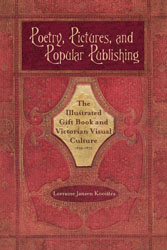 Buy on Amazon |
Charles LaPorte, Victorian Poets and the Changing Bible (University of Virginia Press, 2011) This book charts the relationship between Victorian biblical criticism and English poetic culture. Nineteenth-century Biblical criticism strongly emphasizes the Bible's "poetic" nature, which is one reason it so dramatically altered the vocational aspirations of contemporary poets. This book focuses upon Tennyson, the Brownings, Clough, and George Eliot in a wide-ranging discussion of nineteenth-century literary hierarchies, the evolution of English poetics, and the ongoing relevance of religion to modern culture. |
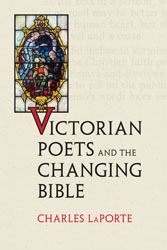 Buy on Amazon |
Yisrael Levin, A.C. Swinburne and the Singing Word: New Perspectives on the Mature Work (Ashgate 2010) Contributors: Stephanie Kuduk Weiner, John A. Walsh, Yisrael Levin, Brian Burton, Nick Freeman, Charlotte Ribeyrol, Catherine Maxwell, Rikky Rooksby, David G. Riede. Focusing on Algernon Charles Swinburne's later writings, this collection makes a case for the seriousness and significance of the writer's mature work. While Swinburne's scandalous early poetry has received considerable critical attention, the thoughtful, rich, spiritually and politically informed poetry that began to emerge in his thirties has been generally neglected. This volume addresses the need for a fuller understanding of Swinburne's career that includes his fiction, aesthetic ideology, and analyses of Shakespeare and the great French writers. Among the key features of the collection is the contextualizing of Swinburne's work in new contexts such as Victorian mythography, continental aestheticism, positivism, and empiricism. Individual essays examine, among other topics, the dialect poems and Swinburne's position as a regional poet, Swinburne as a transition figure from nineteenth-century aesthetic writing to the professionalized criticism that dominates the twentieth century, Swinburne's participation in the French literary scene, Swinburne's friendships with women writers, and the selections made for anthologies from the nineteenth century to the present. Taken together, the essays offer scholars a richer portrait of Swinburne's importance as a poet, critic, and fiction writer. |
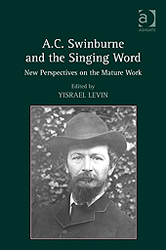 Buy on Amazon |
Melissa Edmundson Makala, ed. East of Suez. 1901. (Victorian Secrets, 2010) East of Suez (1901) was Alice Perrin's first collection of short stories. Her fascinating and thought-provoking tales of Anglo-Indian life rival the best work of Kipling, and were hugely successful in their day. Perrin tells stories of illicit love and betrayal set against a beautifully-drawn backdrop of the mystical east, interweaving the supernatural with exquisite details of her characters' lives. As the Times wrote in her obituary: "She wrote a simple, unforced style, and the reader feels keenly the heat, the dust, the moonrise, the night calls, and all the sights and sounds and smells of the unchanging East." |
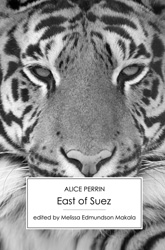 Buy on Amazon |
Aaron Matz, Satire in an Age of Realism (Cambridge University Press, 2010) As nineteenth-century realism became more and more intrepid in its pursuit of describing and depicting everyday life, it blurred irrevocably into the caustic and severe mode of literature better named satire. Realism's task of portraying the human became indistinguishable from satire's directive to castigate the human. Introducing an entirely new way of thinking about realism and the Victorian novel, Aaron Matz refers to the fusion of realism and satire as "satirical realism": it is a mode in which our shared folly and error are so entrenched in everyday life, and so unchanging, that they need no embellishment when rendered in fiction. Focusing on the novels of Eliot, Hardy, Gissing, and Conrad, and the theater of Ibsen, Matz argues that it was the transformation of Victorian realism into satire that granted it immense moral authority, but that led ultimately to its demise. |
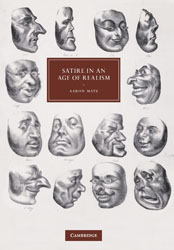 Buy on Amazon |
Andrew Maunder and Jennifer Phegley, eds., Teaching Nineteenth-Century Fiction (Palgrave Macmillan 2010) This collection examines what is taught in nineteenth-century fiction courses in the light of the constantly changing canon; indicates how key critical approaches can be taught effectively through nineteenth-century fiction; and discusses the relationship between the literary text and the literary, cultural, and historical contexts surrounding it. It features essays about teaching serial novels, ghost stories, sensation fiction, women writers, fiction of empire, neo-Victorian novels, and theory. It also includes sample syllabuses for courses described by the contributors. |
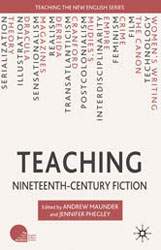 Buy on Amazon |
James H. Murphy, Irish Novelists and the Victorian Age (Oxford University Press, 2011) This is a study of what until recently has been a neglected field, fiction written by Irish authors during the Victorian age. It was neglected because subsequent, more nationalist generations disparaged the work of Irish authors who were mostly writing for London publishers and a British audience. There has been renewed interest by critics and literary historians in it recently, however, because of the light this fiction throws on Irish culture and society in the nineteenth century and on the cultural interaction between Ireland and Britain. This study is the first comprehensive, book-length account of such fiction, based on a reading of around 370 novels by 150 authors. Some of the authors have survived in memory, such as William Carleton, Charles Lever, Somerville and Ross, and the Irish writers of the new-woman movement. This study also brings back to scholarly attention many largely forgotten authors. It analyses the development of the novel in Ireland and places novels and the authors in the social and literary contexts of their times. |
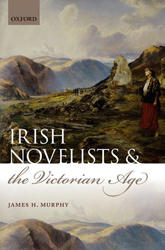 Buy on Amazon |
Grace Moore, ed., Pirates and Mutineers in Nineteenth-Century Literature (Ashgate, 2011) The first volume devoted to literary pirates in the nineteenth century, this collection examines changes in the representation of the pirate from the beginning of the nineteenth century through the late Victorian period. Gone were the dangerous ruffians of the eighteenth-century novel and in their place emerged a set of brooding and lovable rogues, as exemplified by Byron's Corsair. As the contributors engage with acts of piracy by men and women in the literary marketplace as well as on the high seas, they show that both forms were foundational in the promotion and execution of Britain's imperial ambitions. Linking the pirate's development as a literary figure with the history of piracy and the making of the modern state tells us much about race, class, and evolving gender relationships. While individual chapters examine key texts like Treasure Island, Dickens's 1857 'mutiny' story in Household Words, and Peter Pan, the collection as a whole interrogates the growth of pirate myths and folklore throughout the nineteenth century and the depiction of their nautical heirs in contemporary literature and culture. |
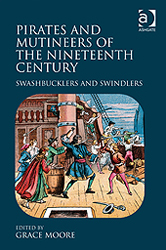 Buy on Amazon |
Richard Nemesvari, Thomas Hardy, Sensationalism, and the Melodramatic Mode (Palgrave Macmillan, 2011) Thomas Hardy, Sensationalism, and the Melodramatic Mode provides the first full-length study of sensationalist and melodramatic elements in Hardy's novels. The book's three sections focus on constructions of masculinity, presentations of female embodiment, and formulations of modernity through class conflict in Desperate Remedies, The Mayor of Casterbridge, Far from the Madding Crowd, A Laodicean, The Hand of Ethelberta, and Jude the Obscure. Through the discussion of theses texts, the study demonstrates the ways in which Hardy used the melodramatic mode to advance his critique of established Victorian cultural beliefs through the employment of non-realistic plot devices and sensational "excess." |
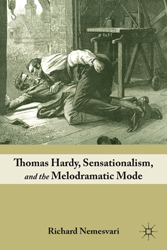 Buy on Amazon |
Timothy Larsen, A People of One Book: The Bible and the Victorians (Oxford University Press, 2011) Although the Victorians were awash in texts, the Bible was such a pervasive and dominant presence that they may fittingly be thought of as 'a people of one book'. They habitually read the Bible, quoted it, adopted its phraseology as their own, thought in its categories, and viewed their own lives and experiences through a scriptural lens. This astonishingly deep, relentless, and resonant engagement with the Bible was true across the religious spectrum from Catholics to Unitarians and beyond. The scripture-saturated culture of nineteenth-century England is displayed by Timothy Larsen in a series of lively case studies of representative figures ranging from the Quaker prison reformer Elizabeth Fry to the liberal Anglican pioneer of nursing Florence Nightingale to the Baptist preacher C. H. Spurgeon to the Jewish author Grace Aguilar. Even the agnostic man of " T. H. Huxley and the atheist leaders Charles Bradlaugh and Annie Besant were thoroughly and profoundly preoccupied with the Bible. Serving as a tour of the diversity and variety of nineteenth-century views, Larsen's study presents the distinctive beliefs and practices of all the major Victorian religious and sceptical traditions from Anglo-Catholics to the Salvation Army to Spiritualism, while simultaneously drawing out their common, shared culture as a people of one book. |
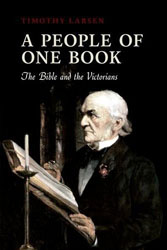 Buy on Amazon |
George Levine, Darwin the Writer (Oxford University Press, 2011) Darwin's enormous cultural success depended as much on the construction of his argument and the artistry of his language as it did on the power of his ideas. By exploring Darwin as a writer as well as a scientist, this book transforms our understanding of him, giving us a Darwin who is comic rather than tragic and ebullient rather than austere. |
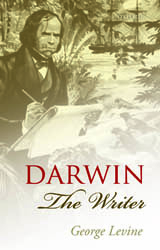 Buy on Amazon |
Peter Melville Logan, Olakunle George, Susan Hegeman, and Efraín Kristal, eds., The Encyclopedia of the Novel (Wiley-Blackwell, 2011) An advanced reference resource for the novel and novel theory, The Encyclopedia of the Novel offers authoritative accounts of the history, terminology, genre, and theory of the novel in 150 substantial articles. Entries explore the global history and traditions of the novel; formal elements (story, plot, character, narrator); technical aspects of the genre (such as realism, narrative structure and style); subgenres, including the bildungsroman and the graphic novel; theoretical problems, such as definitions and histories of the novel; book history; and the novel's relationship to other arts and disciplines. |
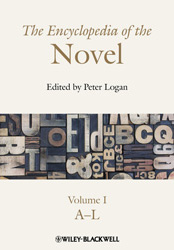 Buy on Amazon |
Louise Penner, Victorian Medicine and Social Reform: Florence Nightingale among the Novelists (Palgrave-Macmillan, 2010) Victorian Medicine and Social Reform: Florence Nightingale among the Novelists traces Florence Nightingale's career as a reformer and Crimean war heroine. Her fame as a social activist and her writings including Notes on Nursing and Notes on Matters Affecting the Health, Efficiency and Hospital Administration of the British Army influenced novelists such as Wilkie Collins, Elizabeth Gaskell, and George Eliot. Their novels of social realism, in turn, influenced Nightingale's later essays on poverty and Indian famine. This study draws original conclusions on the relationship between Nightingale's work and its historical context, and gender politics. (http://us.macmillan.com/victorianmedicineandsocialreform) |
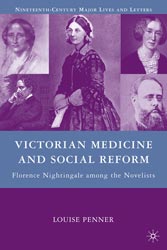 Buy on Amazon |
Jennifer Phegley, Courtship and Marriage in Victorian England. Victorian Life and Times Series, edited by Sally Mitchell (Praeger Press, October 2011) This book uses little-known conduct books, letter-writing manuals, domestic guidebooks, periodical articles, letters, and novels to reveal what the period equivalents of "dating" and "tying the knot" were like in the Victorian era. By addressing topics such as the etiquette of introductions and home visits, the roles of parents and chaperones, the events of the London season, the use of model love letters, alternative courtship practices such as personal advertisements and matrimonial bureaus, and the specific challenges facing domestic servants seeking spouses, this book provides a fascinating examination of British courtship and marriage rituals among the working, middle, and upper classes from the 1830s to the 1910s. The book also examines the transformation of marriage laws throughout the century, attending to the effects these laws had on ordinary people. In addition, it will provide a deeper understanding of how and why marriage norms were defined and maintained by considering the many people who lived outside the boundaries of traditional matrimony. |
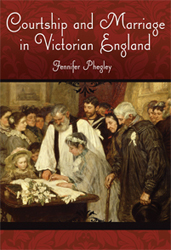 Buy on Amazon |
Jill Rappoport, Giving Women: Alliance and Exchange in Victorian Culture (forthcoming; Oxford University Press, 2011) Altruism and self-assertiveness went hand in hand for Victorian women. During a period when most lacked property rights and professional opportunities, gift transactions allowed them to enter into economic negotiations of power as volatile and potentially profitable as those within the market systems that so frequently excluded or exploited them. They made holiday presents of books and homemade jams, transformed inheritances into intimate and aggressive bequests, and offered up their own bodies in sacrifice. Far more than selfless acts of charity or sure signs of their suitability for marriage, such gifts radically reconstructed women's personal relationships and public activism in the nineteenth century. In works by Brontë, Barrett Browning, Gaskell, and Rossetti as well as in literary annuals, Salvation Army periodicals, and political pamphlets, Giving Women demonstrates how female authors and fictional protagonists alike mobilized gift exchanges outside of marriage and the market. |
 Buy on Amazon |
Patricia Rigg, Julia Augusta Webster: Victorian Aestheticism and the Woman Writer (Fairleigh Dickinson University Press, 2009) This biographically informed critical study of Julia Augusta Webster focuses on Webster's intersecting identities–conventional wife and mother, member of the literary intelligentsia, social activist, and writer. Webster's literary work suggests that she became increasingly aestheticist in her views, increasingly preoccupied with her awareness of transience and impermanence, with her own chronic illness, and with her conviction that only through a redefinition of 'beauty' could her society accommodate the gendered political ideals of female suffrage and education. The book is ordered chronologically to reflect stages in Webster's development as an aestheticist writer, development that culminates in her posthumously published sonnet sequence Mother and Daughter. |
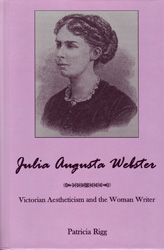 Buy on Amazon |
Russell Perkin, Theology and the Victorian Novel (McGill Queens University Press, 2010) Religious issues played a prominent role in Victorian England and had a profound influence on the culture of that period. In Theology and the Victorian Novel, J. Russell Perkin shows that even the apparently secular world of the realist novel is shaped by the theological debates of its time. Beginning with a wide-ranging introduction that explains why a theological reading of Victorian fiction is both rewarding and timely, Perkin also addresses religion's return to prominence in the twenty-first century, confounding earlier predictions of its imminent demise. Chapters on William Thackeray, Charlotte Brontë, Charlotte Yonge, Anthony Trollope, George Eliot, and Thomas Hardy are followed by a concluding discussion of Mary Ward and Walter Pater that relates Pater's Marius the Epicurean to postmodern theology and shows how it remains a religious classic for our own time. (http://mqup.mcgill.ca/book.php?bookid=2436) |
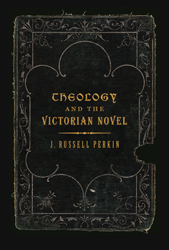 Buy on Amazon |
Bianca Tredennick, ed., Victorian Transformations: Gender, Nationalism, and Desire in Nineteenth-Century Literature (Ashgate, 2011) Proposing the concept of transformation as a key to understanding the Victorian period, this collection explores the protean ways in which the nineteenth century conceived of, responded to, and created change. The volume focuses on literature, particularly issues related to genre, nationalism, and desire. For example, the essays suggest that changes in the novel's form correspond with shifting notions of human nature in Victor Hugo's Notre-Dame de Paris; technical forms such as the villanelle and chant royal are crucial bridges between Victorian and Modernist poetics; Victorian theater moves from privileging the text to valuing the spectacles that characterized much of Victorian staging; Carlyle's Past and Present is a rallying cry for replacing the static and fractured language of the past with a national language deep in shared meaning; Dante Gabriel Rossetti posits unachieved desire as the means of rescuing the subject from the institutional forces that threaten to close down and subsume him; and the return of Adelaide Anne Procter's fallen nun to the convent in "A Legend of Provence" can be read as signaling a more modern definition of gender and sexuality that allows for the possibility of transgressive desire within society. The collection concludes with an essay that shows neo-Victorian authors like John Fowles and A. S. Byatt contending with the Victorian preoccupations with gender and sexuality. |
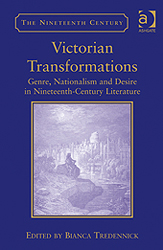 Buy on Amazon |
Marjorie Wheeler-Barclay, The Science of Religion in Britain, 1860-1915 (University of Virginia Press, 2010) This study argues that, although the existence and significance of the science of religion has been barely visible to modern scholars of the Victorian period, it was a subject of lively and extensive debate among nineteenth-century readers and audiences. Focusing on the lives and work of six scholars: Friedrich Max Müller, Edward B. Tylor, Andrew Lang, William Robertson Smith, James G. Frazer, and Jane Ellen Harrison, this volume shows how they attempted to arrive at a dispassionate understanding of the psychological and social meanings of religious beliefs and practices. Although this intellectual enterprise was primarily focused on non-Christian religions, Wheeler-Barclay situates the history of this field within the broad contexts of Victorian intellectual and cultural history and explores its links with contemporary religious debates. |
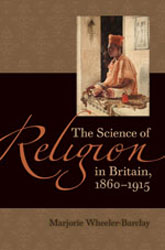 Buy on Amazon |
Carolyn Williams, Gilbert and Sullivan: Gender, Genre, Parody (Columbia University Press, 2011) This study treats parody as a historicizing, modernizing mode. The G&S collaborations invent English comic opera through parodies of other and older theatrical and literary genres — melodrama and burlesque extravaganza, especially, but also grand opera, the minstrel show, the music hall, Shakespeare, the Victorian novel, and Victorian poetry. With a chapter on each of the 14 collaborations, the book explores not only genre parody but also social parody — especially gender parody — in Gilbert's libretti and Sullivan's music. Its conclusion, on "The Momentum of Parody," considers the significance of parodies of English comic opera, itself now a past genre. |
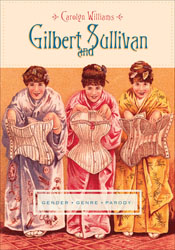 Buy on Amazon |
Sarah Winter, The Pleasures of Memory: Learning to Read with Charles Dickens (Fordham University Press, 2011). Examining a set of Dickens's most popular novels from The Pickwick Papers to Our Mutual Friend, this study illuminates the ways that Dickens's serial fiction shaped not only the popular practice of reading for pleasure and instruction associated with the growth of periodical publication in the nineteenth century, but also the school subject we now know as "English." Tracing the emergence of Dickens's celebrity authorship as the personification of an egalitarian cultural politics addressed to a heterogeneous readership, Winter argues that the canonization of Dickens's novels in the literature curriculum transformed these distinctive elements of Dickens's Victorian reception into a rationale for the socially inclusive and humanizing goals of democratic education. |
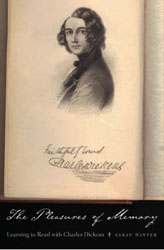 Buy on Amazon |

